On 24 June 1963, Lee Oswald visited the passport office in New Orleans to renew his passport number 1733242 which had been issued in 1959 before his fake defection to the USSR. The new passport, D092526, had been missing since landing in the hands of the FBI on 26 November 1963, specifically New Orleans Special Agent Warren C. de Brueys. It was allegedly and unsuccessfully used in Mexico City to obtain a Cuban visa in the fall of 1963. After de Brueys acquired both passports, only the old expired one, number 1733242, was published by the Warren Commission as Commission Exhibit 946 (CE 946):
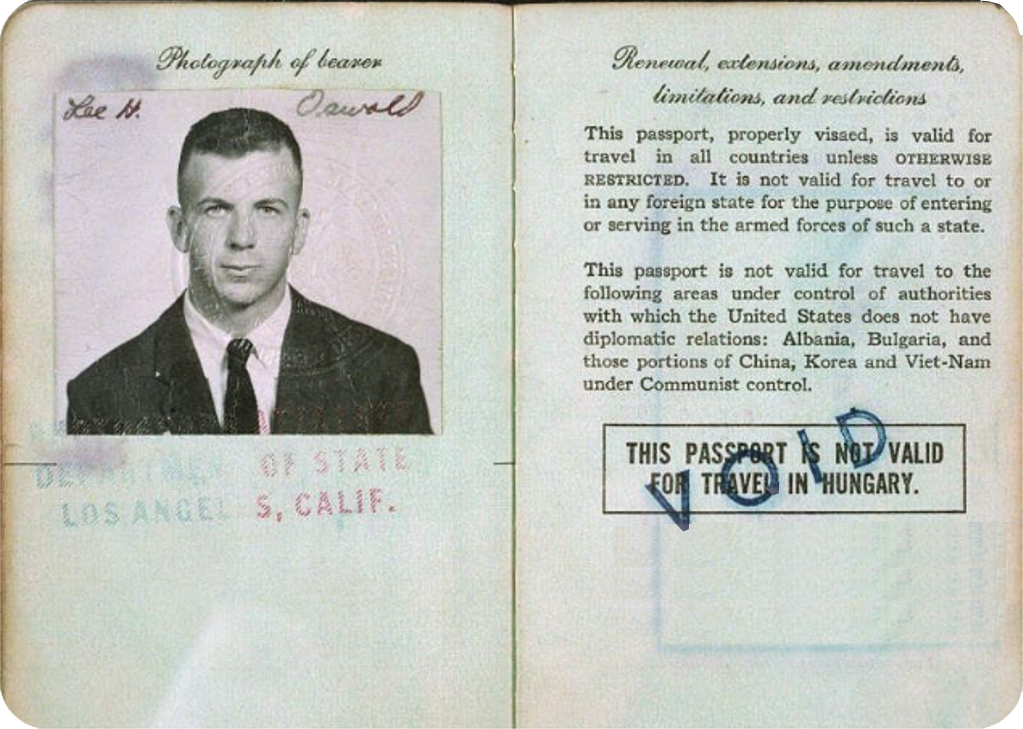
Compare the above, with what the Warren Commission published in CE946 below.
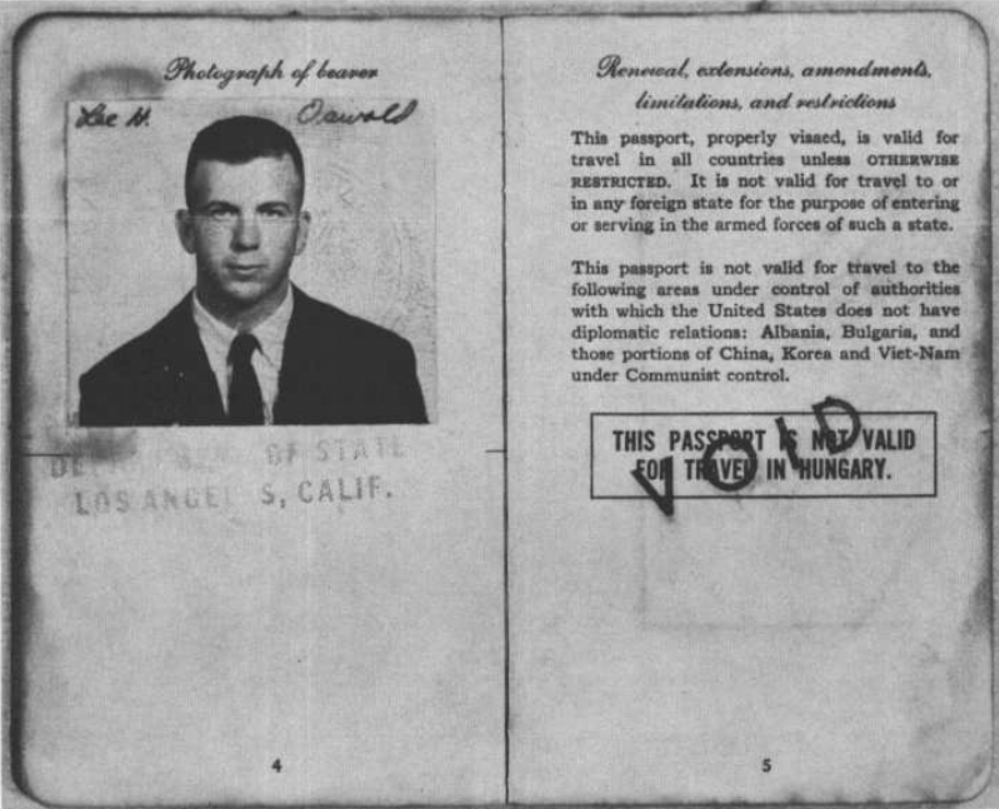
The reason we see such a marked difference between these images is that the clearer images that follow, came from photographs taken by the Dallas Police Department after collecting Lee’s belongings at the N. Beckley address on 23 November 1963. In a crude but effective manner, someone held the passports down on a table while another photographed them at close range. Note the tips of fingers seen in these photographs belonging to the person who held them down to facilitate their processing. Afterward, they lay dormant in DPD archives until they were digitized and transferred to a Texas History website at the North Texas State University.
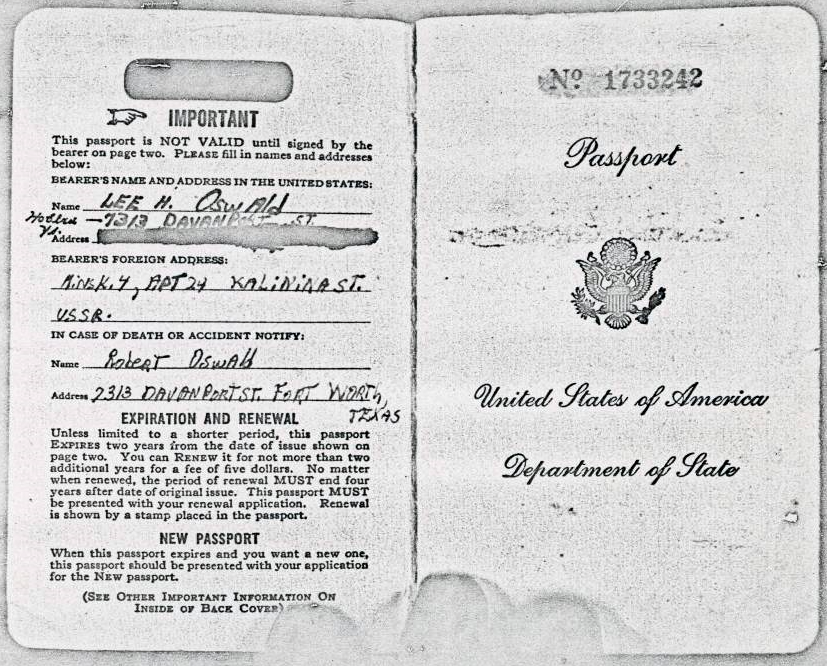
Again, note above and below which show the extremely poor quality of the passport after it was received by the FBI.
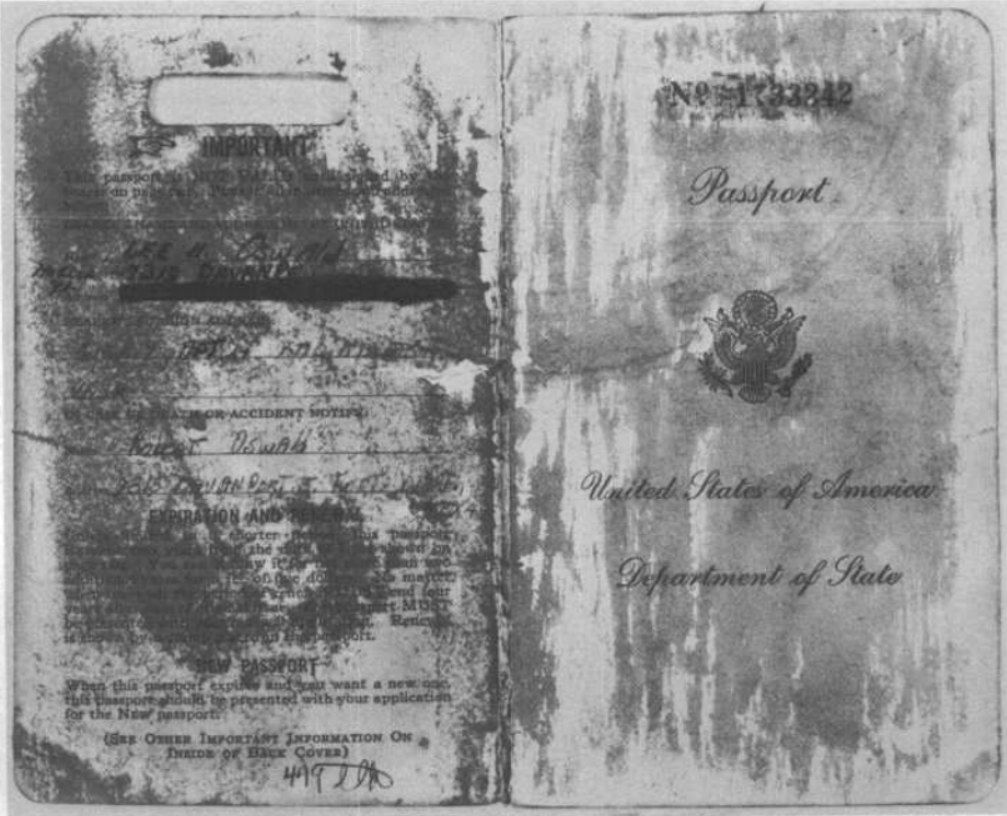
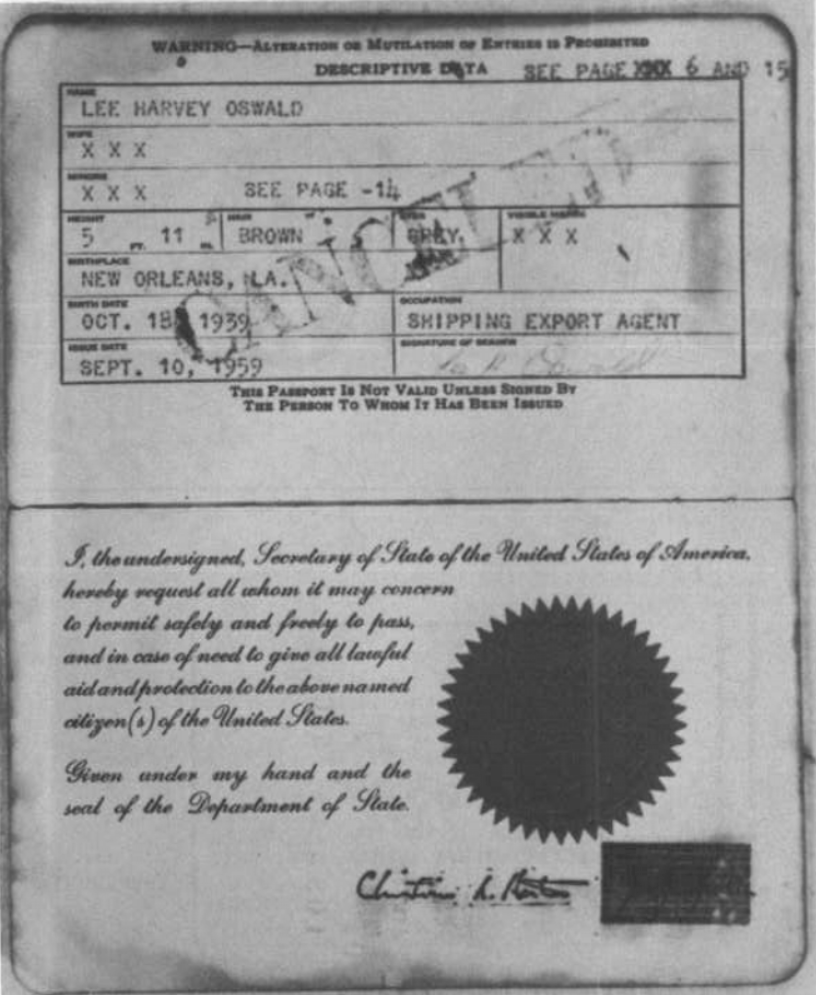
These next two images are from the special Texas repository mentioned above.
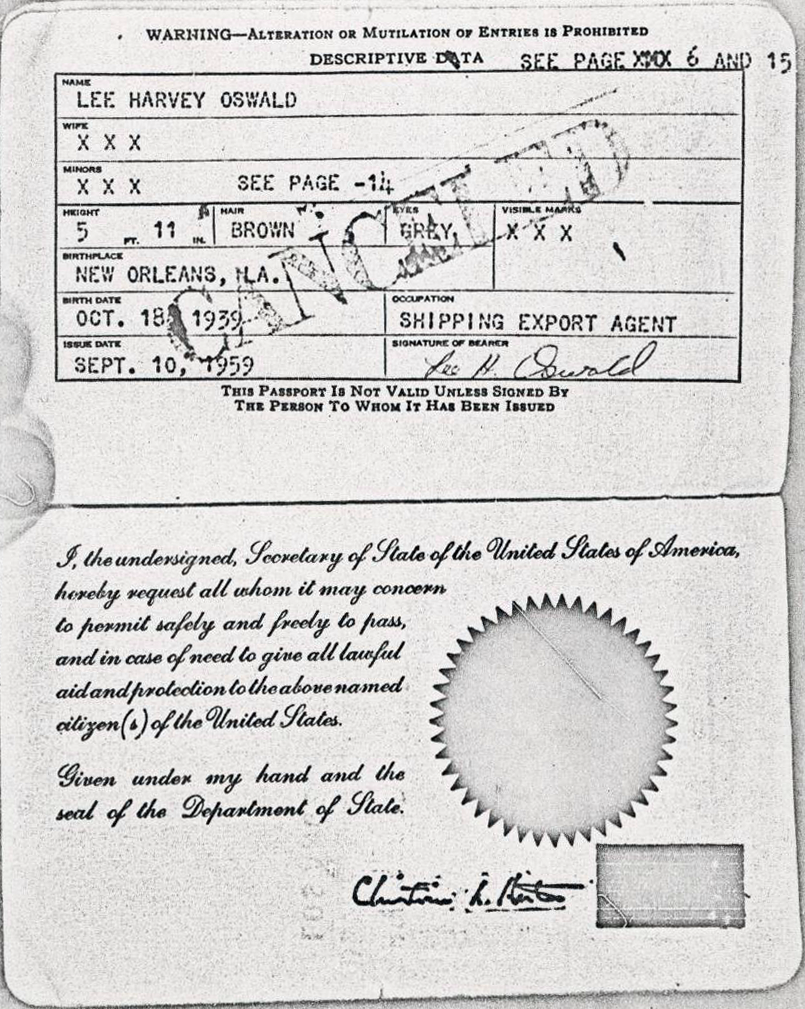
Here is the visa page that added his newborn daughter baby June to his passport in preparation for the family’s return to the United States in 1962.
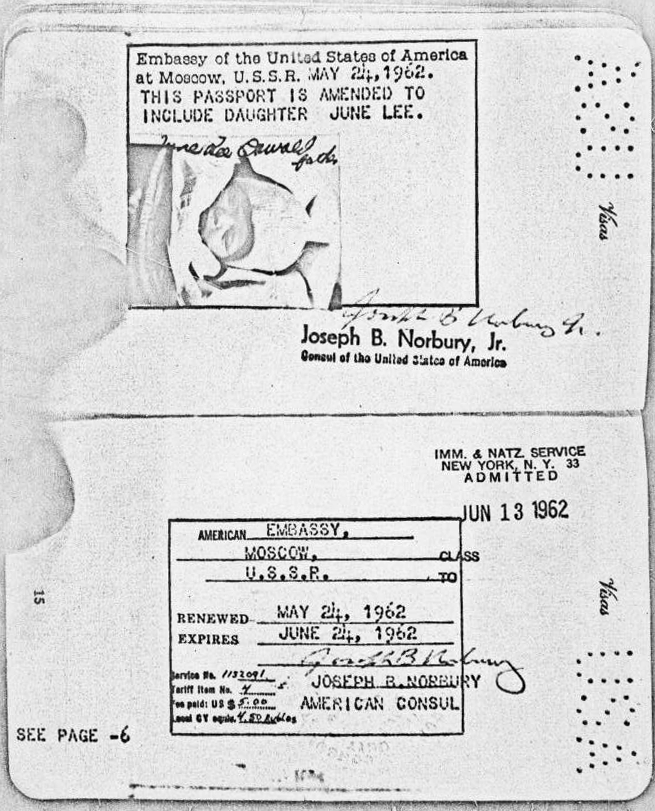
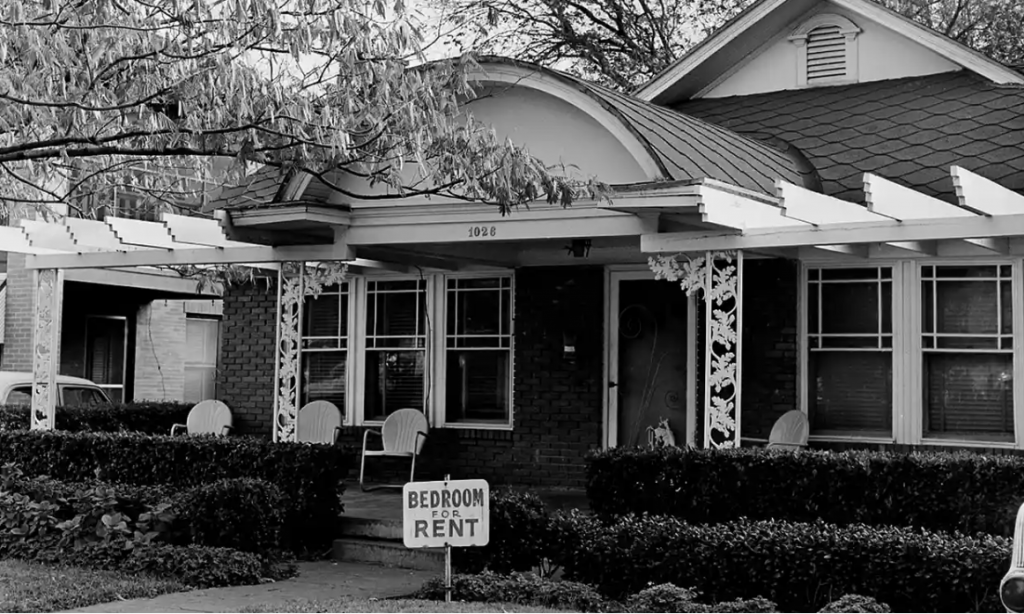
As noted, the passports were found when a search warrant was executed by the Dallas Police Department at 1026 N. Beckley on 23 November 1963, where Lee rented a room in the name of “O.H. Lee”. This is a photograph of Lee’s meager possessions at the N. Beckley address.
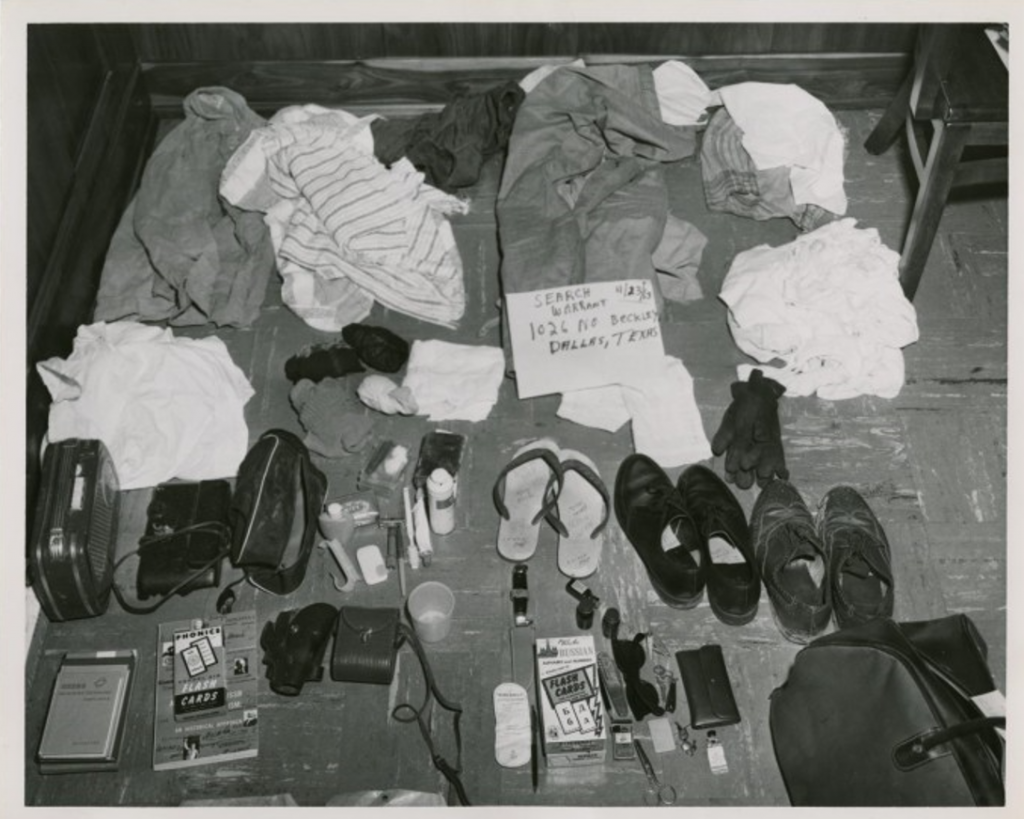
The next two images are the actual invoices/receipts numbered 11198 and 11199 for both passport books D092526 and 1733242 respectively. They were done in an almost flawless manner at the FBI office in Dallas by the FBI, using the DPD’s form CPS-FC-647. The passports are numbered 446 and 449 as entered in the receipts which were dated 26 November. The chain of evidence for passport D092526 (item 446) ended with de Brueys:
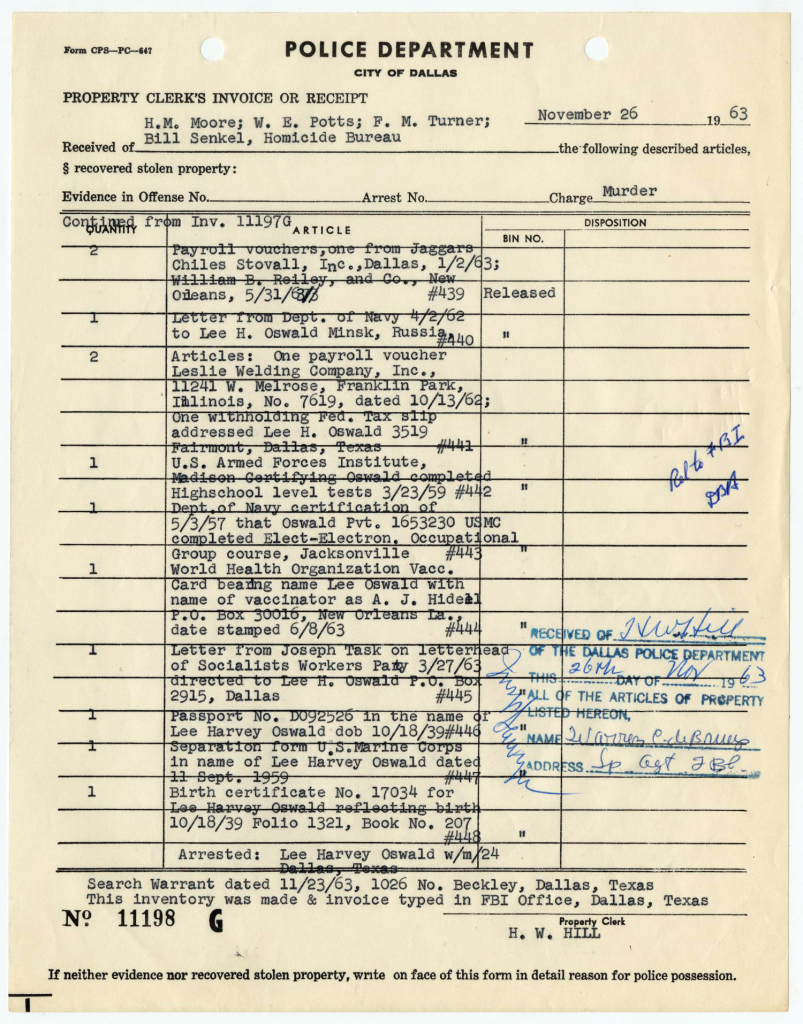

The story of passport D092526
The new passport, D092526, was issued after processing this renewal application on 24 June 1963:
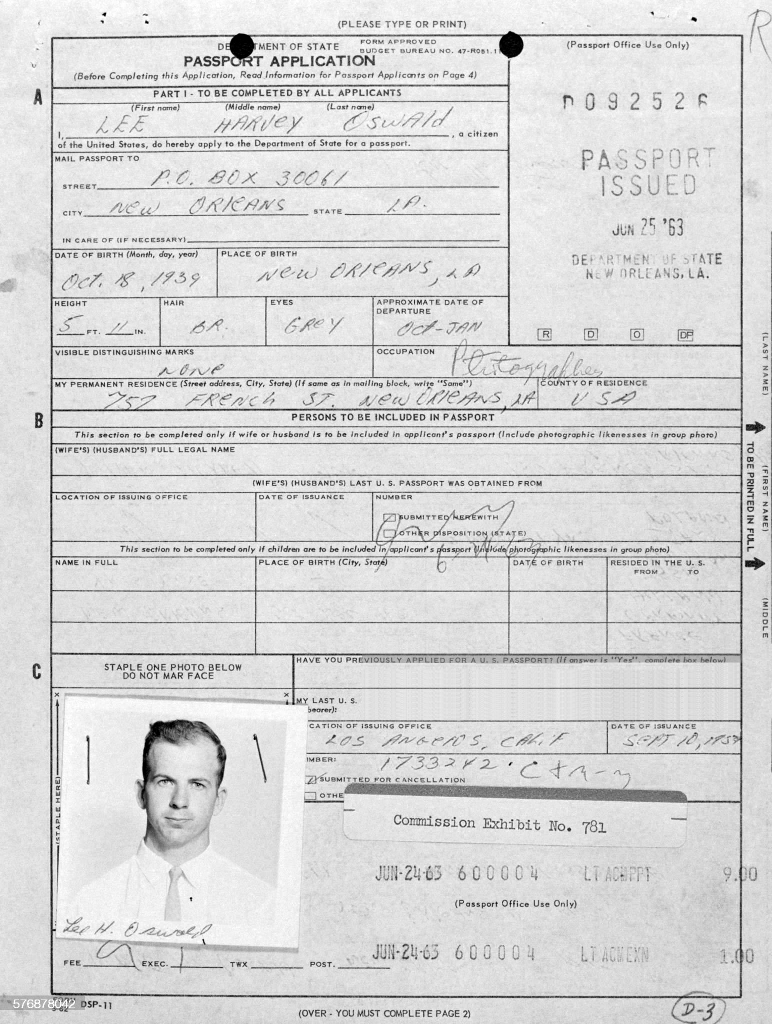
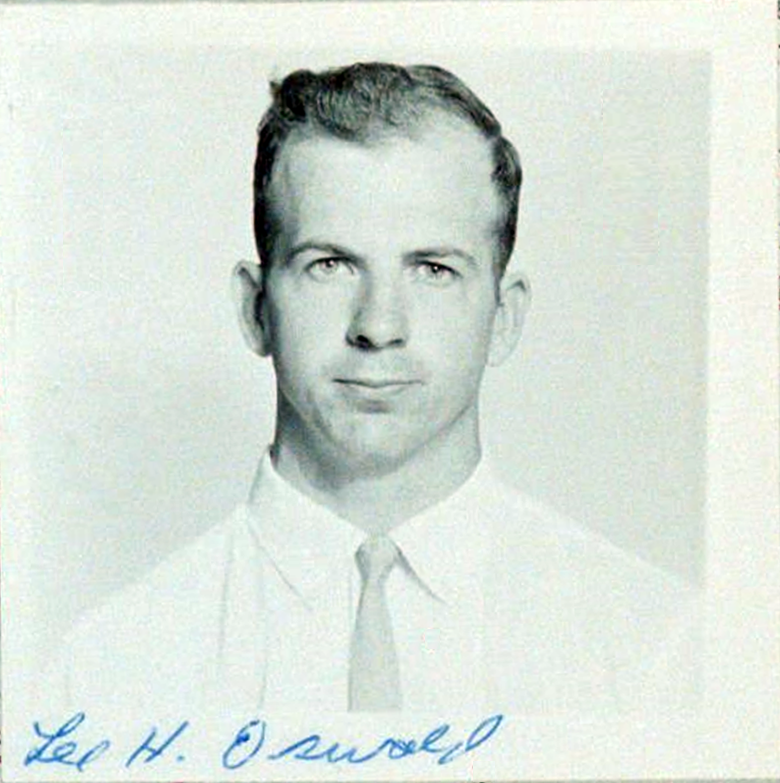
The original passport application stated some very specific countries that he intended to visit with his family. Notice nowhere does it say his intention to travel to Mexico or Cuba.

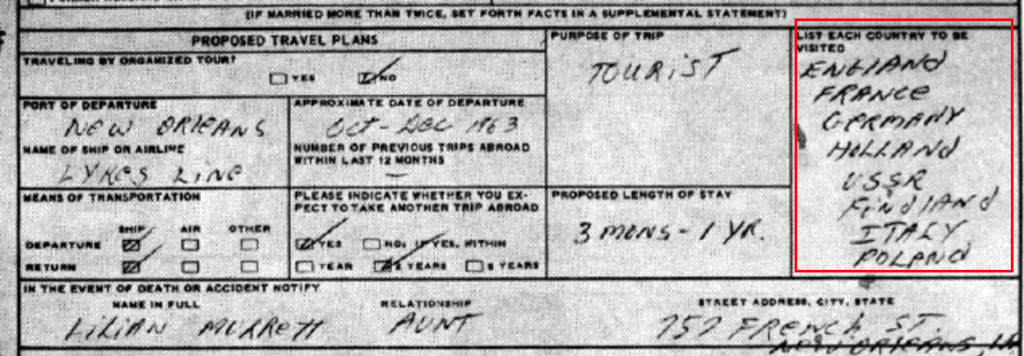
The passport was expeditiously processed and delivered to Lee the very next day!
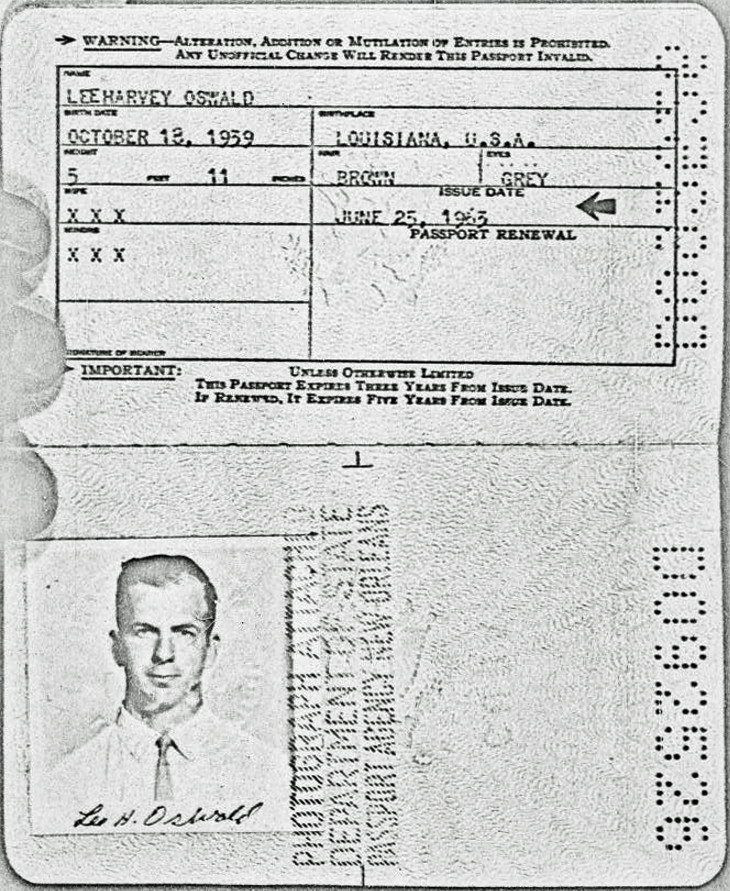
Page four listed the countries that the U.S. State Department forbade travel to. These included China, Korea, Vietnam, Albania, and with a special large rubber stamp that took up almost half the page — CUBA
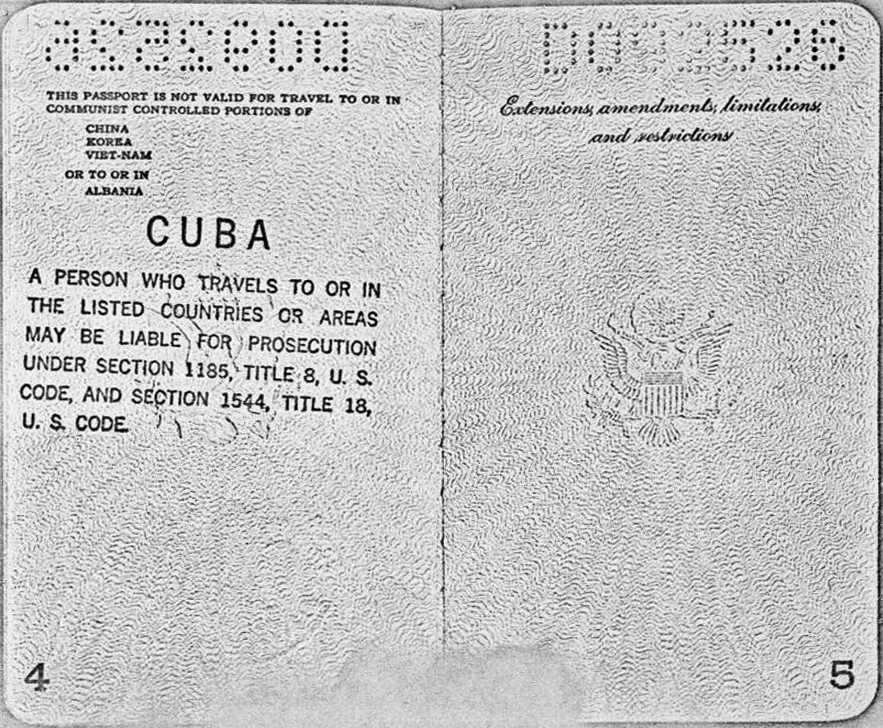
Finally, the portraits of both passports are a perfect match.
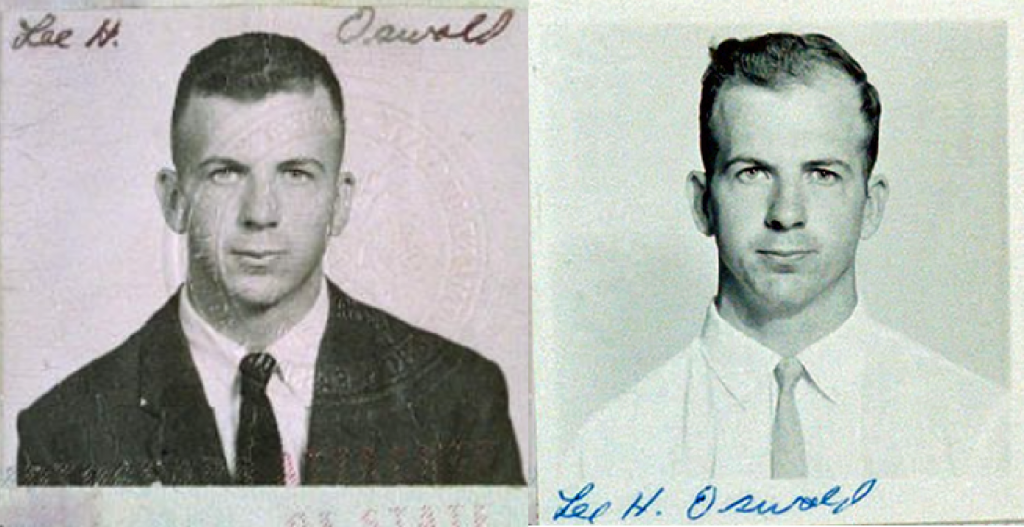
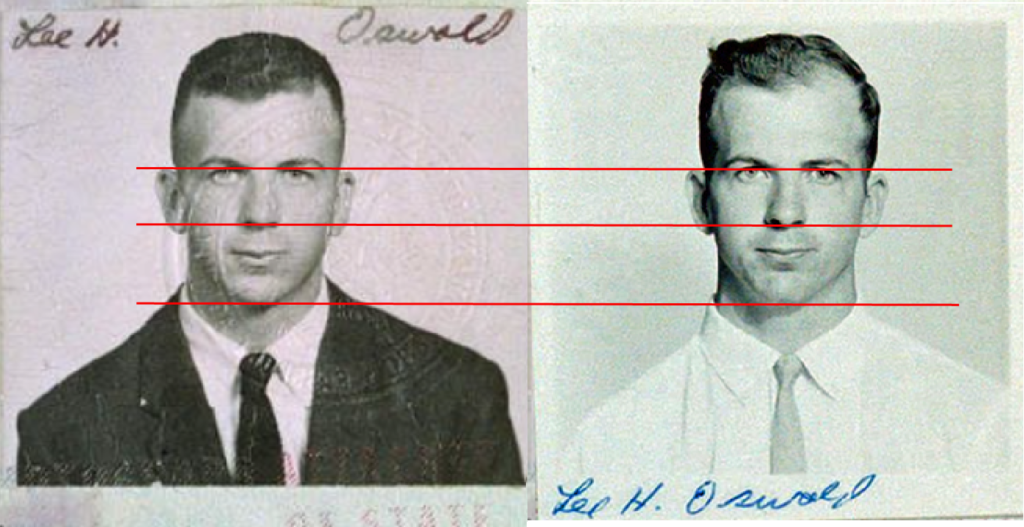
This 50% overlay proves it. Lee Oswald at 19 years of age, was issued passport 1733242 on 10 September 1959, and Lee Oswald at 23, was issued passport D092526 on 25 June 1963. Moreover, a study of both signatures reveals a perfect match.

The question that begs to be answered is why was passport D092526 suppressed by the FBI and later the Warren Commission and all derivatives that followed. Had it not been for the DPD, we would have never known that photos existed of both passports. Of course, this opens up new areas of investigation. If the original passport D092526 were to surface, it would tell us if Lee used it, perhaps on a special assignment out of the U.S. heretofore unknown. This information would have been stamped on the visa pages of the passport book. But the most logical reason for its suppression appears to have been the forbidden to travel to CUBA stamp on page 4 seen above because no doubt it would have been questioned by the American public. The Mexico City scenario probably would have never been considered as a ruse to set up the patsy and some other course of action would have been necessary.
